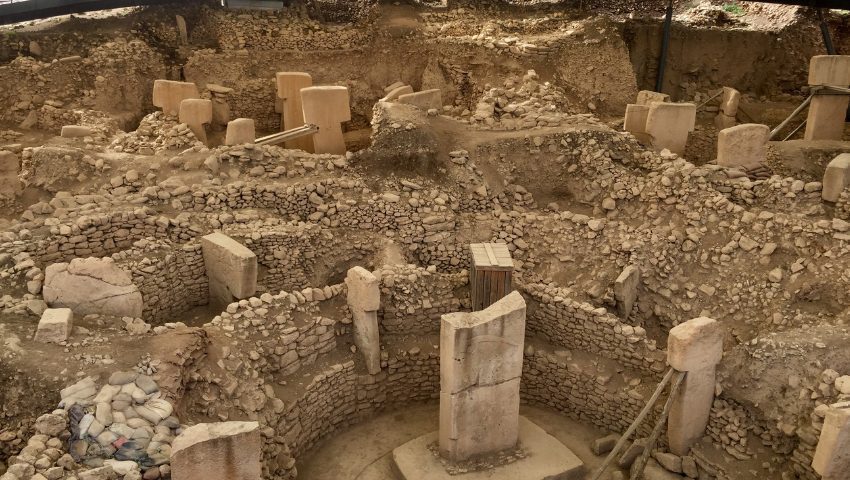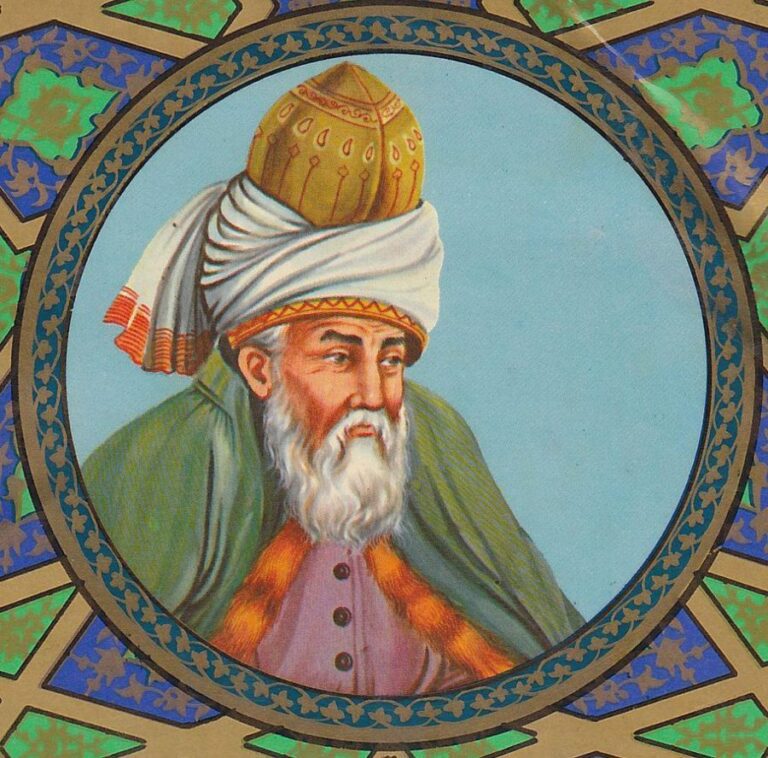Table of Contents
Living in Turkey for seven years, Göbeklitepe was a revelation for me. The birthplace of civilization, near Şanlıurfa, is a historical marvel dating back to 10,000 BC. It’s a place where you can physically touch the beginnings of human history through its stunning stone pillars and engravings.
Visiting Göbeklitepe, you’re not just seeing an archeological site; you’re part of the narrative, reconnecting with the ancient past. It’s a real-life journey to the “tarihin sıfır noktası” (zero point in history), transforming our comprehension of our ancestors’ lives.

How Was Göbeklitepe Discovered
If you’ve been hearing more and more about Göbeklitepe and wondering why it’s gaining such attention, the story of its discovery and excavation is as captivating as the site itself. Back in 1963, as part of the ‘Southeast Anatolia Research Project’, a joint venture between Istanbul and Chicago universities, the first glimpse of Göbeklitepe’s ruins was unveiled. However, it wasn’t until 1995 that actual digging began, and archaeologists started to uncover the layers of history.
This isn’t just any excavation; it’s an ongoing journey into what the site holds — a journey that continues to this day. Every scoop of soil turned at Göbeklitepe is a reminder that we are peeling back the layers of one of the world’s most critical sites of worship — and who knows what other mysteries it may reveal with time?
What makes Göbeklitepe Important
With excavations starting in 1995, the revelations at Göbeklitepe are astounding. Not just one or two, but six temples resembling each other in form have been unearthed. Yet, hold your breath, because this historical gold mine promises even more – geomagnetic surveys suggest hundreds more temples may be hidden beneath.
Imagine, each temple with its T-shaped columns encircled by stone walls – thought to be early depictions of humans, standing in a circle. Beyond this, the heart of these structures is marked by two towering obelisks facing each other, adorned with carvings of animals, humans, and mystical symbols. These aren’t just ruins; they’re a canvas showcasing the oldest known symbolic paintings to date from the Neolithic period.
And there’s an unparalleled significance to Göbeklitepe; it’s recognized as the first and largest temple of its age. If you’re intrigued by the Neolithic lifestyle of hunter-gatherers, Göbeklitepe isn’t just a site; it’s a story waiting to update human history with new truths.
Göbeklitepe and Atlantis
For those who love diving into the mysteries of history, Göbeklitepe serves as a treasure trove, even sparking connections to the fabled lost continents of Atlantis and Mu. There’s this remarkable theory suggesting that when Atlantis was submerged, a grand civilization disappeared along with it, and in an effort to preserve Göbeklitepe, it was intentionally buried.
Adding to the intrigue, journalist Graham Hancock presented a fascinating idea in his Netflix documentary. The theory elaborates that the animal carvings on Göbeklitepe’s megaliths aren’t random; rather, they’re celestial maps marking the stars as they were during a cataclysmic flood.
It’s posited that survivors of this flood journeyed to Göbeklitepe. Here, they not only shared agricultural knowledge but also established the site as a profound memorial. This was meant to communicate the lessons of their experiences to the future — a lasting testimony to a pivotal moment that reshaped humanity. Whether you’re a history buff or a lover of lore, Göbeklitepe’s layers go deeper than the soil; they touch upon the stars.
Facts vs Theories
What’s proven and what’s still a mystery?
Proven Facts
Verified- Over 10,000 years oldGöbeklitepe dates back to the Neolithic era (New Stone Age), making it older than Stonehenge and the Egyptian Pyramids. This age has been confirmed through archaeological evidence and dating methods.
- Discovered in 1963The site was first discovered during the ‘Southeast Anatolia Research Project’, a joint venture between Istanbul and Chicago universities. Actual excavation didn’t begin until 1995.
- Six temples discoveredSince excavations began in 1995, six temples resembling each other in form have been unearthed. Each features T-shaped columns encircled by stone walls, thought to be early depictions of humans standing in a circle.
- T-shaped pillars with carvingsTwo towering obelisks face each other at the heart of these structures, adorned with carvings of animals, humans, and mystical symbols. These are the oldest known symbolic paintings from the Neolithic period.
- UNESCO World Heritage (2018)Declared an Archaeological Site in April 2011, then added to the UNESCO World Heritage Tentative List, before being officially inscribed on the UNESCO World Heritage List in July 2018 at a committee meeting in Bahrain.
- Hunter-gatherer hubGöbeklitepe was a melting pot where hunter-gatherers converged—not just to trade goods but to exchange ideas and beliefs. It was a cultural and economic focal point of its time.
- World’s oldest templeRecognized as the first and largest temple of its age, Göbeklitepe holds the distinction of being the world’s oldest known temple—a title verified by archaeologists worldwide.
Theories
Unproven- Atlantis connectionThere’s a theory suggesting that when Atlantis was submerged, a grand civilization disappeared along with it. In an effort to preserve Göbeklitepe, it was intentionally buried—connecting it to the fabled lost continents of Atlantis and Mu.
- Celestial star mapsJournalist Graham Hancock presented a fascinating idea in his Netflix documentary: the animal carvings on Göbeklitepe’s megaliths aren’t random; rather, they’re celestial maps marking the stars as they were during a cataclysmic flood.
- Flood survivors’ memorialIt’s theorized that survivors of a cataclysmic flood journeyed to Göbeklitepe. Here, they not only shared agricultural knowledge but also established the site as a profound memorial—meant to communicate the lessons of their experiences to the future.
- Intentionally buriedSome theorists suggest that Göbeklitepe was deliberately buried by an ancient civilization to preserve it for the future—a time capsule from a lost world meant to be discovered when humanity was ready.
- Hundreds more temples buriedGeomagnetic surveys suggest hundreds more temples may be hidden beneath the surface. While this is based on scientific surveys, it remains unproven until excavation confirms these predictions.
🌊 The Atlantis & Flood Theory
Click each card to explore Graham Hancock’s Netflix documentary theory
2018: Göbeklitepe is on the UNESCO World Cultural Heritage List
In a significant endorsement of its value to global heritage, the Ministry of Culture and Tourism declared Göbeklitepe as an Archaeological Site in April 2011. This commendation elevated its status, leading to its inclusion on the UNESCO World Heritage Tentative List.
The pinnacle of recognition came in July 2018, during a committee meeting in Bahrain. After around seven years as a contender that revolutionized our understanding of history, Göbeklitepe was officially inscribed on the UNESCO World Heritage List.
This status isn’t about just fame; it’s about preservation. Göbeklitepe has become a chapter of history that we’re all invited to read. Gercekten harika bir yer – it truly is a remarkable place. It’s not merely an old site; it’s a bridge to our origins, one we’re committed to safeguarding.
What Period Does Göbeklitepe Belong To
While the grey clouds of history often obscure our view of civilization’s dawn, Göbeklitepe shines through as a beacon from the Neolithic era, often called the ‘New Stone Age’. This site is more than just a collection of stones; it’s a portal to a time long before the great wonders like Stonehenge or the Pyramids of Egypt graced the earth.
Imagine this: Göbeklitepe is over 10,000 years old. It’s not just a bunch of ruins; it’s recognized as the world’s oldest temple. That’s an accolade that makes you pause and wonder about the hands that built it, doesn’t it?
And to think, some might mistakenly call it a mere village! But scholars and archaeologists have painted a vivid picture of its past. It was a hub, a melting pot where hunter-gatherers converged—not just to trade goods but to exchange ideas and beliefs. Göbeklitepe was a cultural and economic focal point, buzzing with activity and life, meeting the essential needs of its time. Bir zamanlar dünyanın kalbi — once the heart of the world.
Where is Göbeklitepe
Göbeklitepe lies around 15 kilometers northeast of Urfa, , near Orencik Village.
Places Close to Göbeklitepe
Göbeklitepe is around 15 kilometers northeast of Urfa, near Örencik Village.
- Şanlıurfa
- Gaziantep
- Mardin
- Adıyaman
- Diyarbakir
Transportation to Göbeklitepe by Taxi
Getting from Urfa city center to Göbeklitepe by taxi will cost you about 520 TL (around 18 USD). Don’t hesitate to bargain with the driver—it’s common practice. If you’re coming from the airport, expect to pay up to 1000 TL (around 35 USD).

Transportation to Göbeklitepe by Public Transport
For public transit to Göbeklitepe, take bus number 100. These buses leave at 10:00 and 16:30, returning at 12:00 and 18:30. Buses to Göbeklitepe depart at the central Abide stop. The following are the ticket prices: 10 TL, 9 TL for the teacher, and 8 TL for the students. Current price information can be obtained at Urfa Municipality.
Göbeklitepe Visiting Hours
Before visiting the museum, it is a good idea to check the visiting hours of this place, which is known as the world’s oldest temple. Because visiting hours may differ during the summer and winter seasons. For 2024, the entrance charge to Göbeklitepe is 450 TL.
- From April 15 to October 2
Box office opening and visiting start time: 08.00 Box office closing time: 18.30 Closing time: 19.00
- From October 3 to April 14
Box office opening and visiting start time: 08.00 Box office closing time: 16.30 Closing time to visit: 17.00






